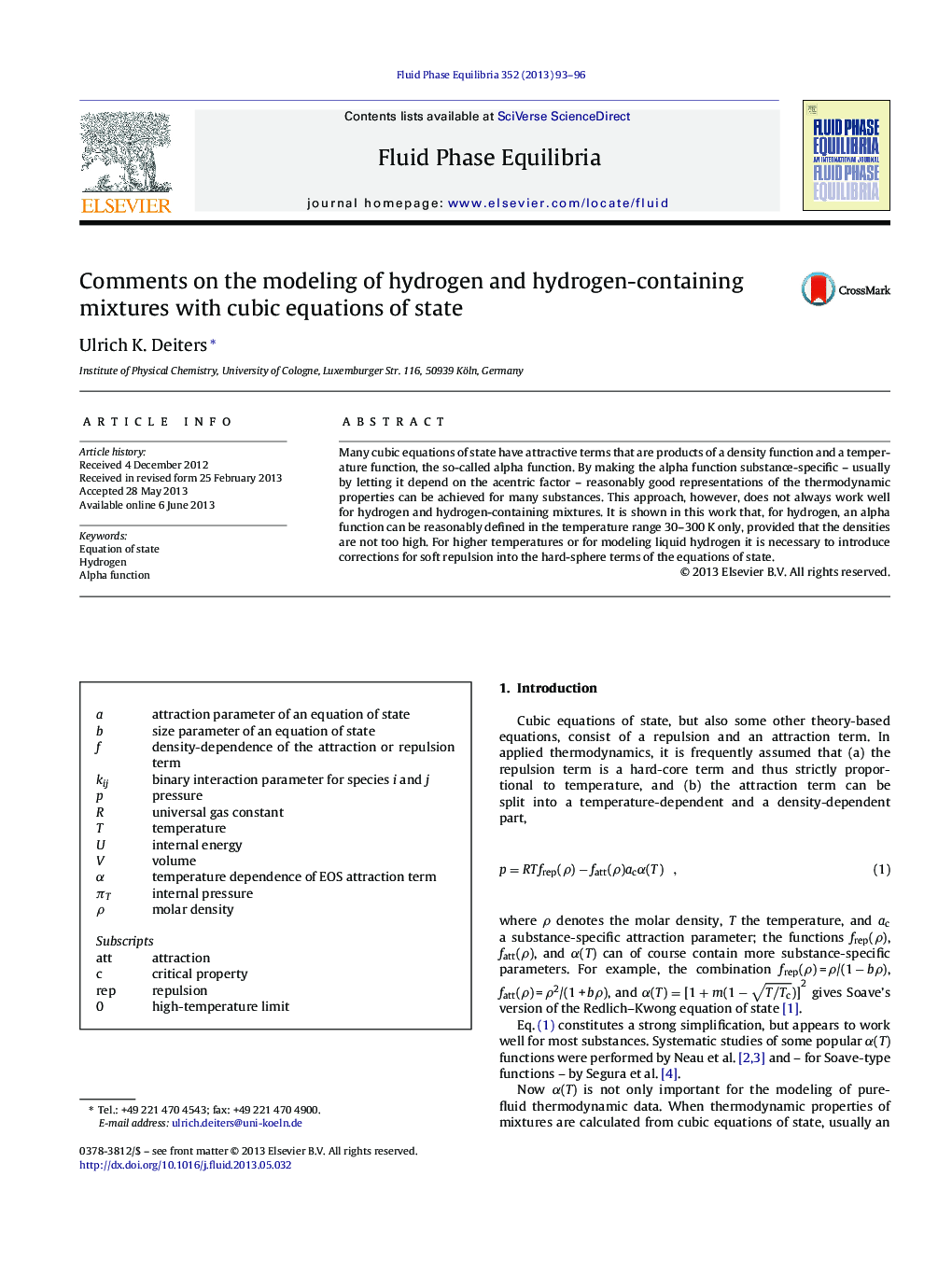| Article ID | Journal | Published Year | Pages | File Type |
|---|---|---|---|---|
| 201323 | Fluid Phase Equilibria | 2013 | 4 Pages |
Many cubic equations of state have attractive terms that are products of a density function and a temperature function, the so-called alpha function. By making the alpha function substance-specific – usually by letting it depend on the acentric factor – reasonably good representations of the thermodynamic properties can be achieved for many substances. This approach, however, does not always work well for hydrogen and hydrogen-containing mixtures. It is shown in this work that, for hydrogen, an alpha function can be reasonably defined in the temperature range 30–300 K only, provided that the densities are not too high. For higher temperatures or for modeling liquid hydrogen it is necessary to introduce corrections for soft repulsion into the hard-sphere terms of the equations of state.
Graphical abstractFigure optionsDownload full-size imageDownload as PowerPoint slideHighlights•The alpha function of cubic EoS is computed for hydrogen from reference data.•For hydrogen, the alpha function cannot be defined at all temperatures and densities.•The alpha function should not be fitted to the acentric factor of hydrogen.•EoS covering wide density and temperature ranges need to account for soft repulsion.
